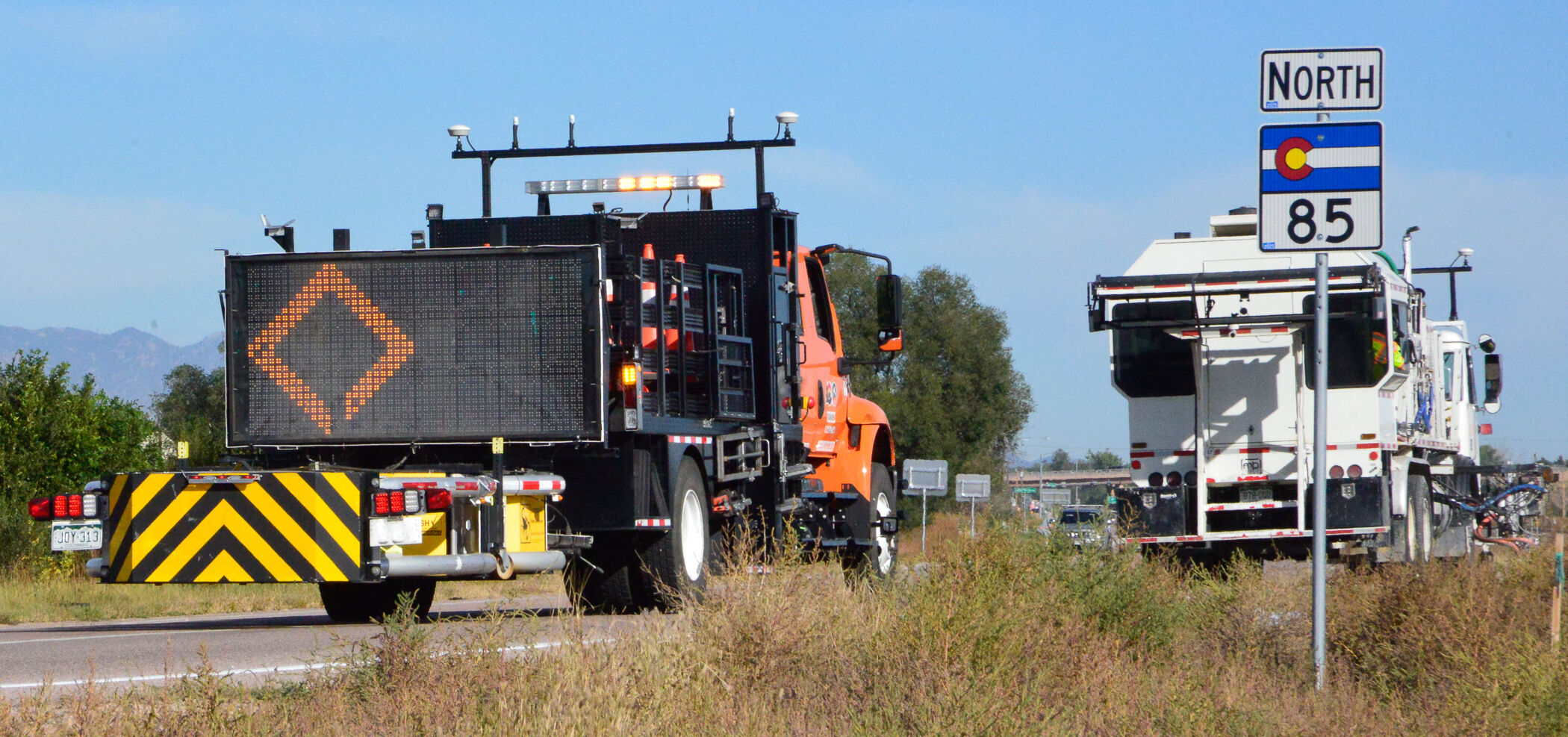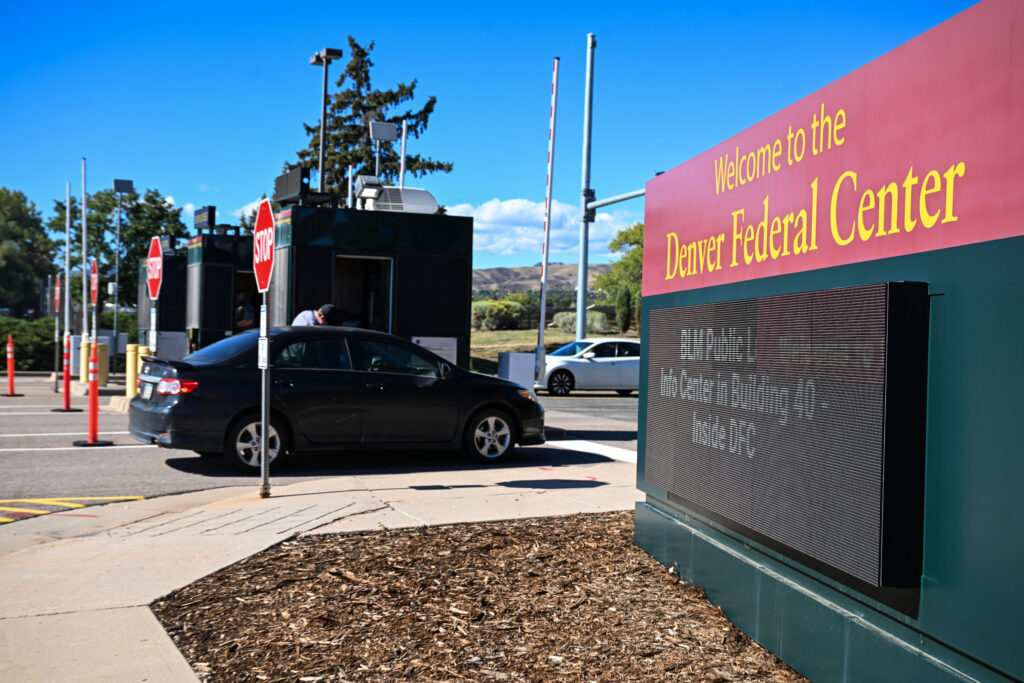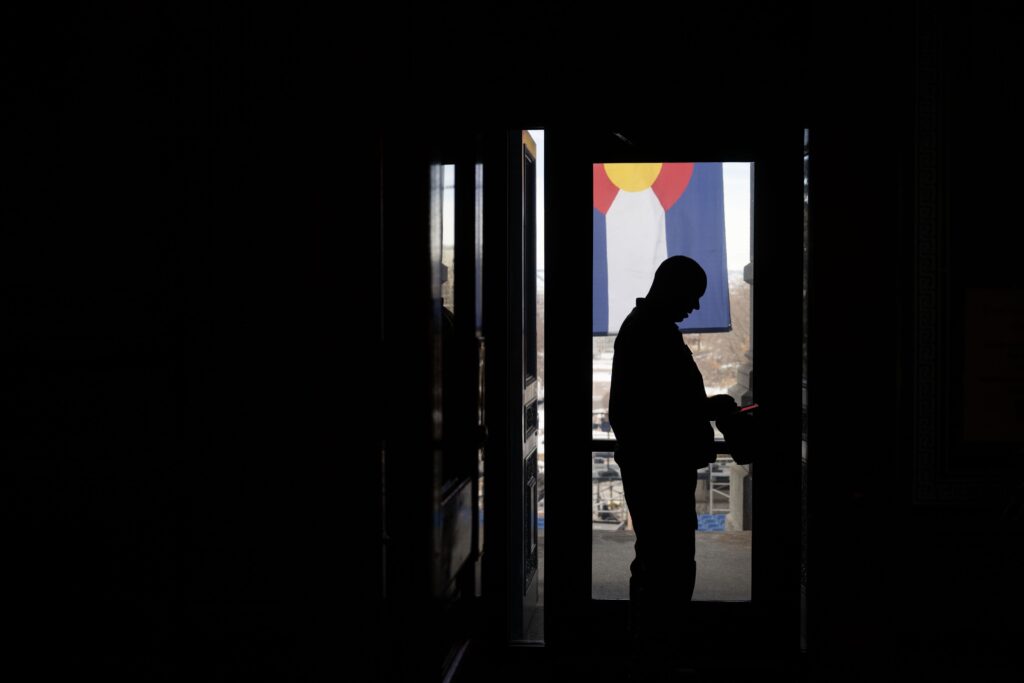Self-Driving CDOT crash truck protects highway workers

Highway work zone crashes kill hundreds of people nationwide each year — two Colorado workers last year — but a new driverless, autonomous highway maintenance truck in Colorado aims to shield workers from deadly rear-end collisions by taking the hit itself.
At a press event in Falcon on Monday, the Colorado Department of Transportation demonstrated an autonomous truck-mounted attenuator — a driverless crash-protection vehicle designed to absorb impacts in roadside work areas. These trucks are already in the state’s fleet, but previously required a worker in the cab, leaving them exposed during crashes.
“These vehicles are designed to get hit so people don’t have to,” said Kay Kelly, CDOT’s chief of innovative mobility. “We want to remove the human from that truck whenever possible.”
In 2023, an estimated 101,000 work zone incidents occurred across the United States, resulting in 818 fatalities and more than 28,000 injuries, according to the Federal Highway Administration.
In Colorado, fatalities numbered 16 that year, surging to 31 in 2024 — a 94% increase — per CDOT data. Officials said the driverless truck saves lives by assigning the most dangerous role to a machine, addressing hazards like reckless drivers.
“Driving a truck-mounted attenuator is one of the most dangerous work zone assignments,” said Shaz Umer, the U.S. Department of Transportation’s director of strategic initiatives.
Colorado pioneered this technology in 2017, becoming the first state to test it. Developed by San Diego-based defense contractor Kratos Defense, the company started on autonomous follower systems in 2012 and installed its initial version in Colorado in 2013, according to Maynard Factor, Kratos’ vice president of business development.
The system uses sensors, actuators, and video links, allowing the unmanned crash truck to trail directly behind a paint-striping or maintenance vehicle. The lead vehicle records its route and transmits navigation data to the follower. Both are equipped with global positioning system and communication tools, with the lead driver monitoring via video feed.
“It’s a convoy system,” Factor said. “The leader does the work, while the driverless vehicle mirrors its path. This protects the operator with the crash truck instead of sitting inside it.”
Sensors detect objects darting into the lane, triggering an automatic stop. Operators can pause or override via a user interface featuring forward-facing cameras on the autonomous truck and rear-facing ones on the work vehicle.
The trucks, existing state assets, are driven to sites and then switched to autonomous mode. Outfitting each with the technology costs about $1 million, excluding the base vehicle and crash absorber.
CDOT currently operates three such trucks in Limon, Pueblo, and the state’s southwest corner, with plans for more through state and federal funding.
The U.S. Department of Transportation awarded Colorado a $2 million grant from the Strengthening Mobility and Revolutionizing Transportation program, created under the 2021 Infrastructure Investment and Jobs Act, to deploy the trucks. A successful first phase could unlock up to $15 million for expansion, said Umer.
Part of a multi-state partnership with Minnesota, Wisconsin, Oklahoma, and research from Penn State University, the initiative aims for nationwide and international growth. Kratos reports 18 trucks operating across the United States, plus one in England.
“This vehicle puts technology in the impact zone, not people,” said Shane Ferguson, CDOT’s Region 2 director. “Every road crew member deserves to go home safely.”
While officials acknowledge the steep price, they argue it’s minor compared to costs from fatalities, lawsuits, and labor shortages in highway maintenance.
“We’re in an era of ongoing discussions about artificial intelligence’s role — what jobs humans can and should hand over to tech,” Kelly said. “Removing a human from a self-driving attenuator is an obvious choice.”
Officials plans to expand the trucks’ uses beyond paint-striping to mowing, pothole patching, and sweeping.
“These trucks are a major safety leap,” Kelly added.
Kratos envisions a global market, with thousands of attenuator trucks in daily use worldwide.
“Our goal is to boost mobile work zone safety everywhere, from Europe and Asia to the Middle East and Australia,” Factor said.
Ultimately, it boils down to worker safety.
“Every shift should end with our people going home alive,” Ferguson said. “If technology helps achieve that, it’s worth it.













